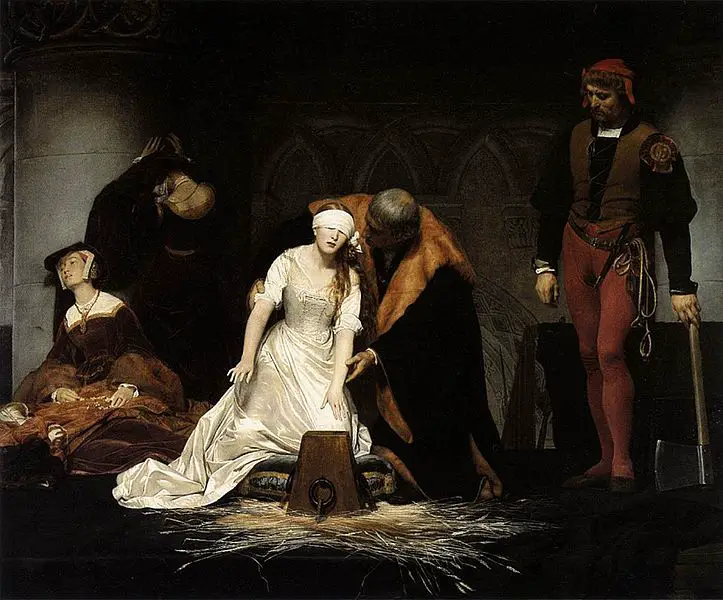 Katherine Parr was different to Henry VIII's other consorts. She was several years older than his previous wives, she had been married twice before, and she had not spent considerable time in royal service. Above all, however, Katherine differs to her five predecessors by virtue of her status as an author. She was the first Queen of England to publish her own work. Katherine was the author of Psalms or Prayers, Prayers of Meditations, and her most radical work The Lamentation of a Sinner. As is well known, Katherine's religious beliefs were radical, and she has with some justice be termed the first Protestant queen of England.1
Katherine Parr was different to Henry VIII's other consorts. She was several years older than his previous wives, she had been married twice before, and she had not spent considerable time in royal service. Above all, however, Katherine differs to her five predecessors by virtue of her status as an author. She was the first Queen of England to publish her own work. Katherine was the author of Psalms or Prayers, Prayers of Meditations, and her most radical work The Lamentation of a Sinner. As is well known, Katherine's religious beliefs were radical, and she has with some justice be termed the first Protestant queen of England.1
Katherine was not content merely to be a conventional spouse. As queen, she saw it as her God-given duty to advance the reformed religion to her subjects, to advance God's word and His teachings. Her interest in religious matters exceeded that of the king's previous wives. Over the course of her reign, Katherine became more confident in voicing her reformist beliefs through the written word. In the winter of 1545-6, Katherine wrote The Lamentation of a Sinner, which has been termed ‘a far more personal work than any of its predecessors’ and almost certainly contains the queen's own personal views on religion.2 Addressed to ‘all Christians’, the writer adopted a male voice throughout the text, recounting in detail ‘the faults of men, which be in the world’.3 In condemning ‘contentious disputers… foul gluttons, slanders, backbiters, advowterers, fornicators, swearers and blasphemers’, the queen ‘assumed a mantle of male identity, speaking to the sinful not as a mere woman... but as a ruler chastising the guilty of both sexes who have deserved her chastisement’.4
The writer associated Christ with qualities that were usually associated with women: ‘Christ was innocent, obedient unto his father... meek and humble in the heart... [who] came to serve… [and] despised worldly honour’.5 The writer, by contrast, referred to herself as being ‘disobedient and most stubborn... most proud and vainglorious... I coveted to rule over [my brethren]’.6 These characteristics were typically associated with men. In short, The Lamentation contained an inversion of contemporary gender roles and attributes, which underscored Katherine's ‘interpretation of her own self-image as one who was set apart by virtue of position and understanding from her sex in general and from those restrictions commonly imposed on that sex in particular’.7 Katherine's idea of what it meant to be queen had a profound influence on her stepdaughter Elizabeth. Her influence on Elizabeth has been seen as having, in the long-term, ‘incalculable consequences for England’.8
The queen's assertiveness in The Lamentation has been interpreted as demonstrating her denial of the contemporary notion of the inferiority of the female sex.9 However, it would be going too far to suggest that her inversion of gender roles amounted to a declaration of female equality.10 Katherine's conformity to contemporary expectations of gender can be visibly discerned elsewhere. When her husband angrily confronted her in 1546, accusing her of lecturing him, she quickly placated him: “I have always held it preposterous for a woman to instruct her lord”. Katherine reassured Henry, “I am but a woman, with all the imperfections natural to the weakness of my sex; therefore in all matters of doubt and difficulty I must refer myself to your Majesty’s better judgement, as to my lord and head”.11 In The Lamentation, the queen stressed her beliefs on the appropriate conduct of the female sex: ‘If they be women married, they learn of St Paul to be obedient to their husbands and to keep silence in the congregation, and to learn of their husbands at home. Also, that they wear such apparel as becometh holiness and comely usage with soberness, not being accusers or detractors, not given to much eating of delicate meats or drinking of wine; but that they touch honest things, to make the young women sober-minded, to love their husbands, to love their children, to be discreet, housewifely and good, that the Word of God may not be evil spoken of’.12 According to Katherine, women should ideally be pious, respectful, sober, chaste, defer to their husbands, moderate, and loving.
Notwithstanding this, contemporaries celebrated the queen and praised her virtues which, in their eyes, set her aside from her sex. John Foxe referred to Katherine as ‘but a woman accompanied with all the imperfections natural to the weakness of her sex’, but commented that she was ‘very zealous towards the Gospel’.13 Roger Ascham, fellow of St John’s College, Cambridge, praised Katherine as an ‘erudite Queen’ and a ‘most noble lady’, and referred to her ‘talents’ and her desire to learn ‘more amidst the occupations of your dignity than many of us do in all our leisure and quiet’.14 Indeed, Katherine's virtues and accomplishments, viewed by contemporaries as unusual in the female sex, may have come to seem threatening to her husband, who was reluctant to be ‘bested by a woman’.15
Undoubtedly, Queen Katherine was outspoken, passionate, opinionated, learned and resolute: not all of which were ideal qualities that male commentators associated with the female sex. It would be anachronistic, however, to label the queen an early feminist. She certainly encouraged women to seek their own salvation through the grace of God alone and beseeched women, alongside men, to disseminate God's word, but at the same time, she maintained that women should be submissive and respectful of their husbands, bear children and behave soberly and modestly.16 By virtue of her religious beliefs and her exalted position, Katherine valued her ideas and her opinions, and was not afraid to voice them in the highest of circles. She believed that it was her duty to set out the word of God and, through her publications, encouraged others – men and women – to join her in her mission.
Notes and Sources
- Susan E. James, Kateryn Parr: The Making of a Queen (Aldershot, 1999), p. 2.
- Ibid., p234.
- Katherine Parr, The Lamentation of a Sinner (London, 1548), f. Gviiib.
- James, Kateryn Parr, pp. 238-9.
- Parr, Lamentation, f. Aviib.
- Ibid.
- James, Kateryn Parr, p. 239.
- Alison Plowden, Tudor Women: Queens and Commoners (New York, 1979), p. 104.
- James, Kateryn Parr, p.240.
- Ibid.
- Alison Weir, The Six Wives of Henry VIII (London, 1991), p. 522.
- Ibid., p.516.
- Ibid., p.495.
- Ibid., p.514.
- David Starkey, Six Wives: The Queens of Henry VIII (London, 2004), p. 755.
- James, Kateryn Parr, p.240.



Conor, you bring forth a fresh outlook and intelligent dissection of the Tudor time period. I very much enjoy reading your articles and hope to read your book on Katherine Howard later this year. Best wishes for your studies and may you have every success in your future.